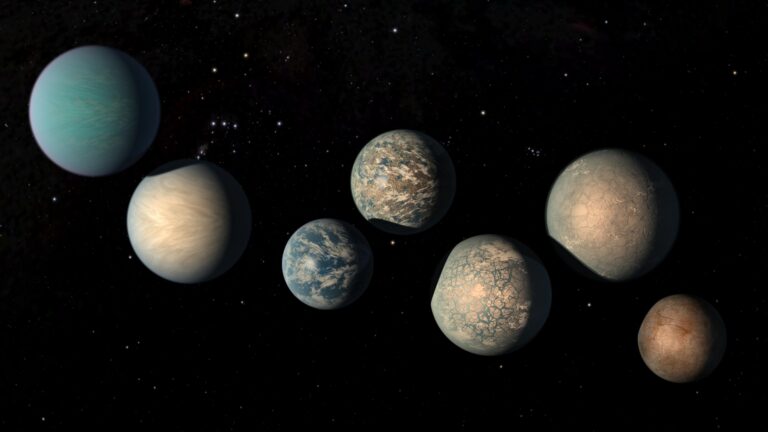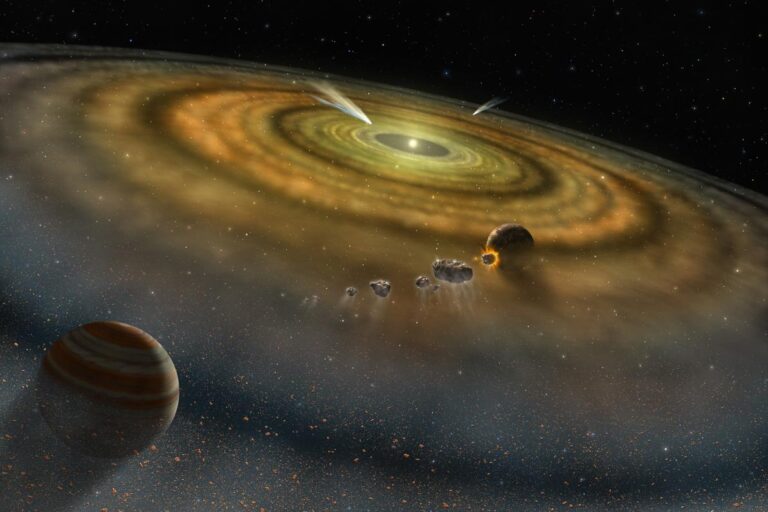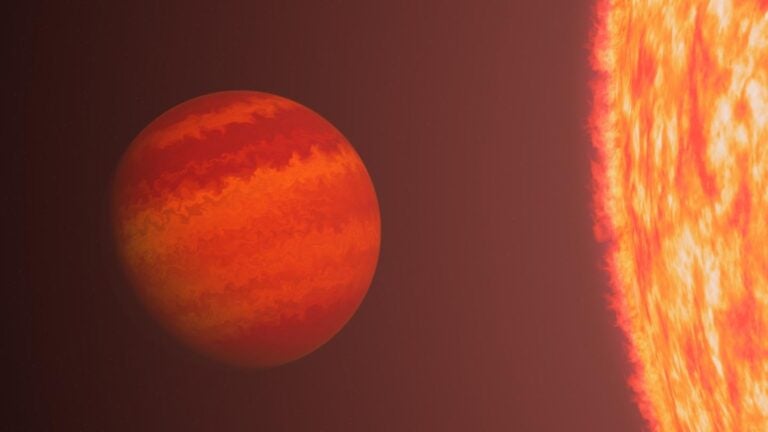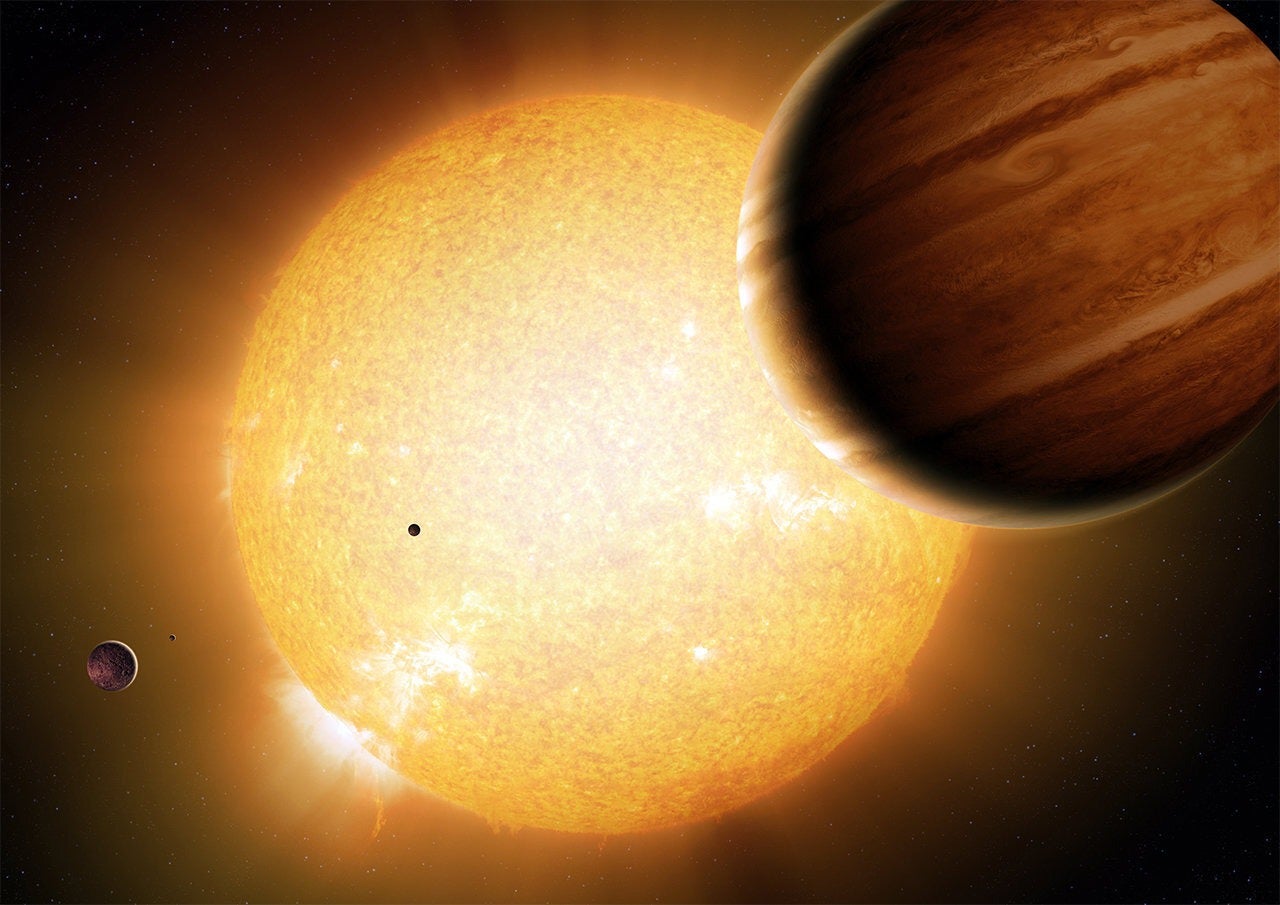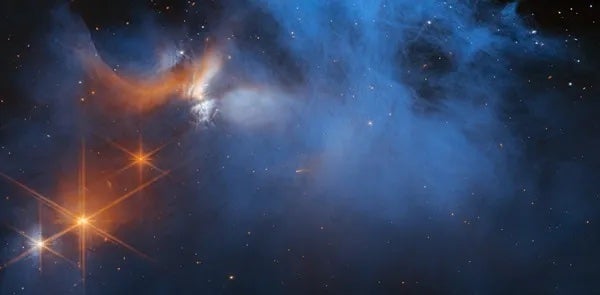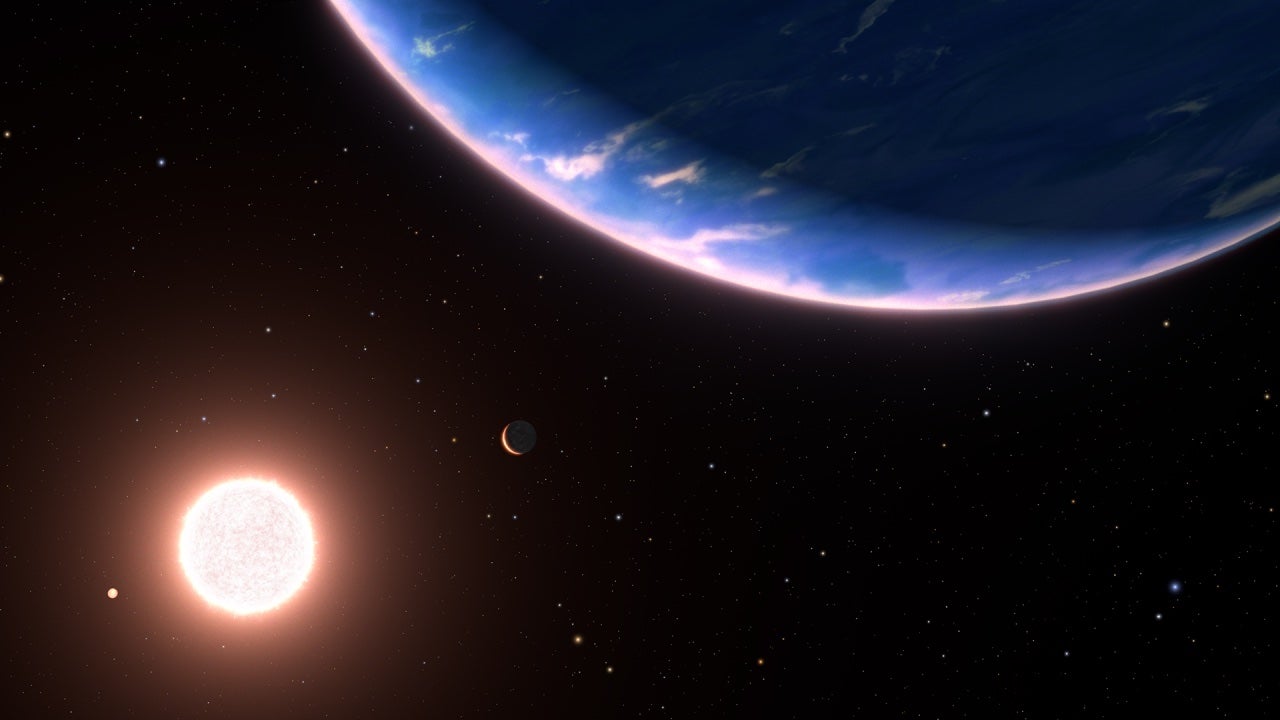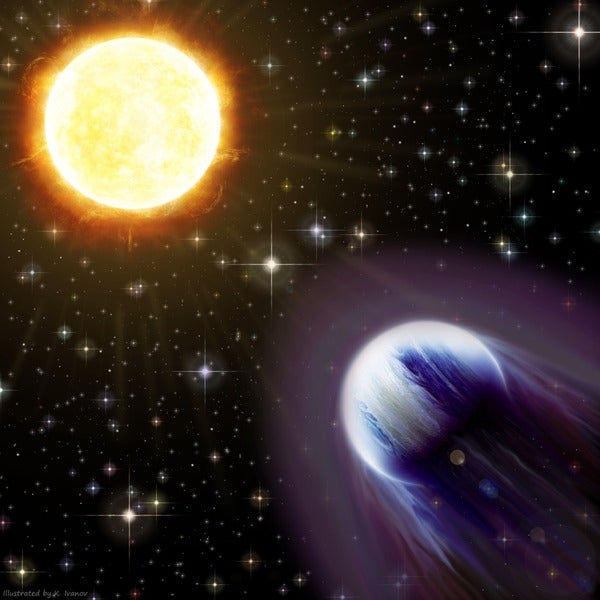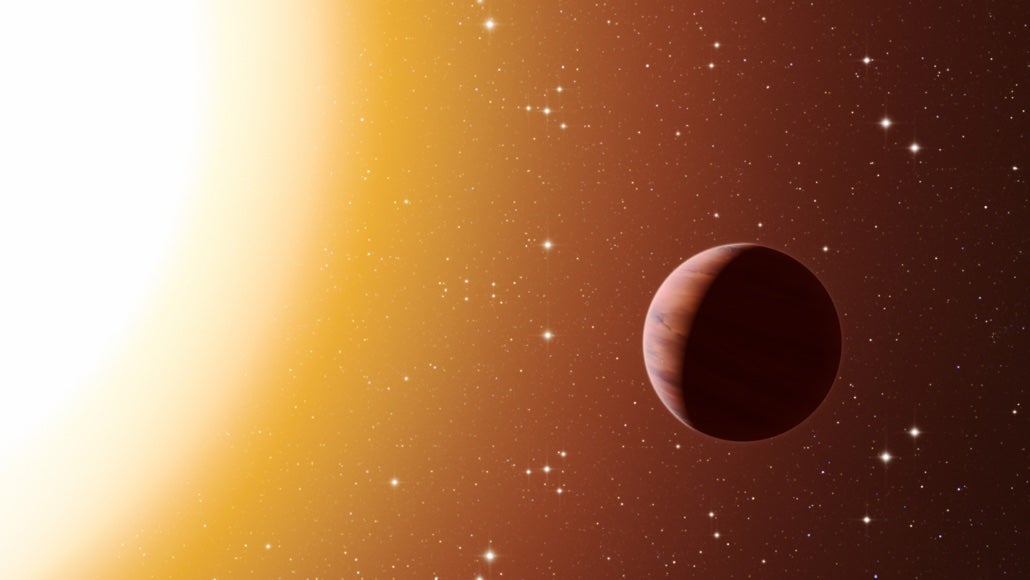
Gas giant exoplanets similar to Jupiter but orbiting close to their host stars are known as “hot Jupiters.” The story of how they form may not be fully written yet. Recent developments have begun to challenge longstanding ideas about the formation of planetary systems, which contend that hot Jupiters form under conditions that preclude the possibility of other, smaller planets existing in the same system.
Astronomers generally believe that systems hosting hot Jupiters form when those massive planets are pulled in close to their stars, thereby expelling smaller planets in a fashion similar to a schoolyard bully. This seems in keeping with the bulk of observational data, which shows that many such systems do not contain smaller planets orbiting alongside the giants.
However, recent data suggest this may not always be the case. “Our research shows that at least a fraction of hot Jupiters cannot form through a violent process,” says Songhu Wang, assistant professor of astronomy at Indiana University. Wang presented the research, conducted in partnership with Dong-Hong Wu of Anhui University and Malena Rice of the Massachusetts Institute of Technology, at the 2023 summer meeting of the American Astronomical Society. “This is a significant contribution to advance our understanding of hot Jupiter formation, which can help us learn more about our own solar system,” says Wang.
Wang and his colleagues also use such data to help formulate models of how our own solar system formed, how other types of planetary systems may form, and how common the different types of planetary systems may be. Astronomers have long questioned why no hot Jupiter exists in our own solar system despite the apparent frequency with which they form elsewhere.
This new study supports earlier research suggesting that hot Jupiters may form in situ, close to their stars, as opposed to more distantly before they migrate inward. In one earlier study, astronomers Elizabeth Bailey and Konstantin Batygin modeled an alternate method for hot Jupiter formation, one more in keeping with the new data.
“The ultimate goal for astronomers is to set our solar system into the bigger picture,” said Dr. Wang. “Are we unique?” Studying how hot Jupiters form and the role they play in the development of planetary systems continues to draw focus from astronomers. After all, models suggest that in our own solar system, the existence and location of Jupiter may have contributed to the development and continuation of life on Earth.
Planetary scientists suggest that Jupiter may have been instrumental in the rise of life on Earth. As summarized by Alan Boss of the Carnegie Institution of Washington, “A long-period Jupiter may be a prerequisite for advanced life.” Why? Jupiter shielded early life on Earth from bombardment. If not for Jupiter, which is still placed just far enough from the Sun to allow smaller planets to exist, Earth may have been frequently struck with asteroids and comets like the asteroid that killed the dinosaurs.
Because Jupiter-like worlds may be so crucial to the development of life, it is important to understand how these types of worlds form in exoplanetary systems. This allows astronomers to gauge how common life may be in the cosmos. For example, new data suggest that red dwarf stars generally lack any orbiting Jupiter-like worlds, which is of great interest to astronomers.
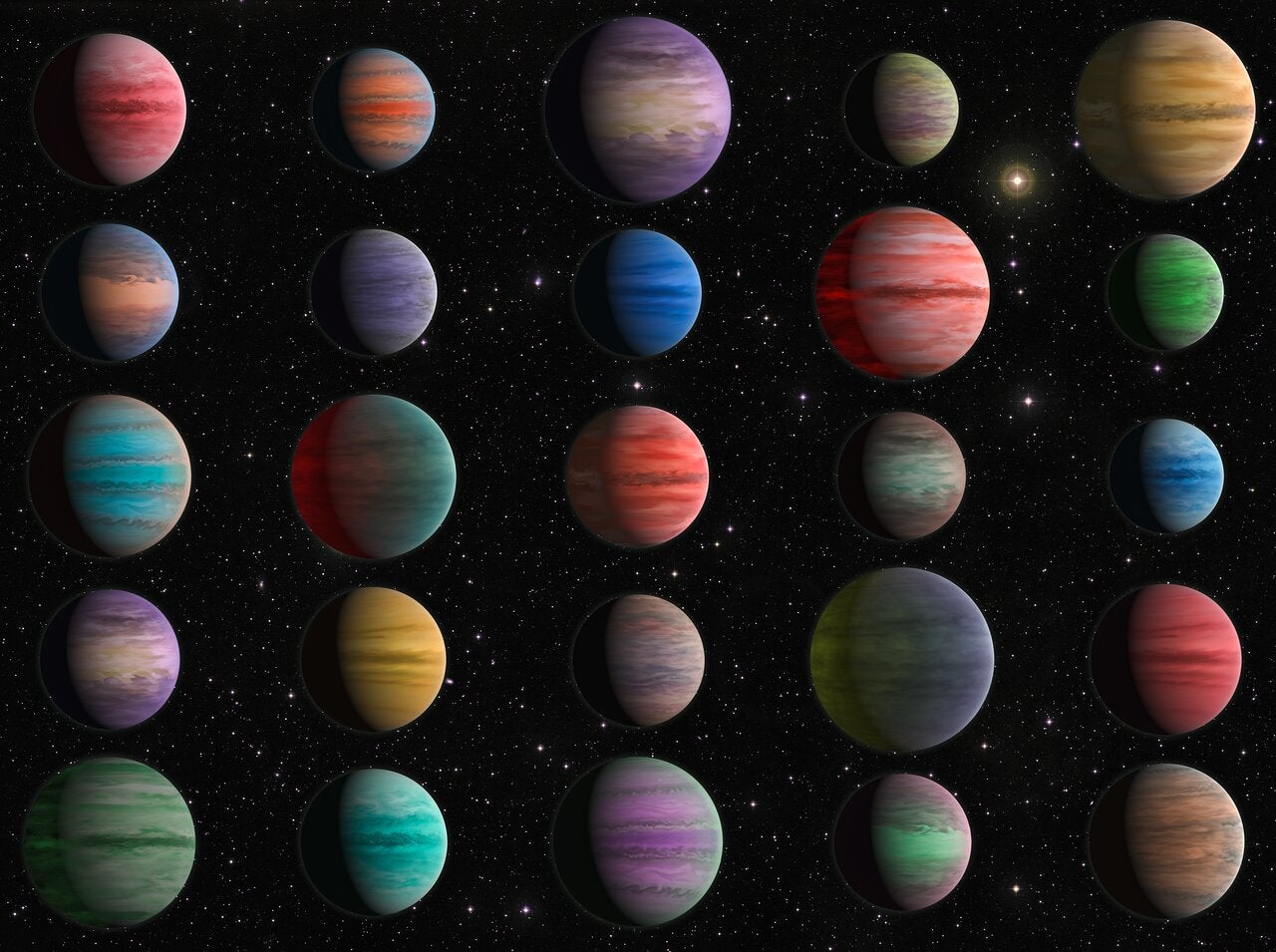
Red dwarfs are much smaller and cooler stars than the Sun, and they make up as much as three-quarters of the Milky Way’s stellar population. Given their commonality, red dwarfs with planetary systems are often the focus of studies seeking potentially life-bearing worlds outside of our own solar system. But if these stars rarely (if ever) host Jupiter-like planets, which may be vital to the development of life, what does this mean for our search for life in the universe?
Data from another recent study indicate that dwarf stars seem to lack giant Jupiter-like planets. According to Emily Pass of the Harvard/Smithsonian’s Center for Astrophysics, red dwarf stars do not seem to contain planets which fill the role of Jupiter in our solar system. This is important because many red dwarfs are among our closest stellar neighbors. About five out of every six nearby stars are red dwarfs, making this class a prime target in the search for life beyond our solar system.
Although the lack of Jupiter analogs in red dwarf systems seems to indicate these planetary systems may be less hospitable to life, Pass urges optimism, owing in no small part to what we still need to learn. “While this discovery suggests truly Earth-like planets might be in short supply around red dwarfs, there still is so much we don’t yet know about these systems, so we must keep our minds open.”



